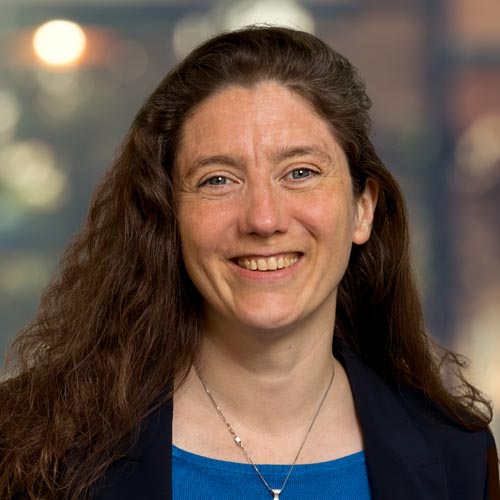
Predicting farm emissions from mobile measurements
Nitrogen emissions are an issue that is high on the agenda for governments and companies. Currently, however, it is not easy to determine the extent to which activities contribute to emissions and what that means for deposition elsewhere. That is why TNO is developing measurement methods and models that will allow the emission, dispersion, and deposition of nitrogen compounds to be measured more effectively. Mobile measurements to map emissions from livestock sheds on farms are a good example.
Certainty through statistics
Dutch nitrogen emissions per hectare are the highest in Europe. The nitrogen compounds emitted, such as ammonia (NH3), can be harmful to the natural environment. Various sectors are responsible for these emissions, including livestock farming.
We know that ammonia from a farm rises into the air in an invisible plume and is carried by the wind. However, we still have much to learn about how this plume develops further, for example how high and wide it is and how the ammonia is distributed in the plume. We would like to gain a better understanding of this process.
At TNO, we look at the whole picture: both ammonia and methane emissions. We have been measuring ammonia for some years now using various instruments on the ground or above forests. For many years we have also been travelling around with mobile measuring vehicles to measure substances including methane. “Taking mobile ammonia measurements is more difficult, though, and we had not previously managed to do that. But for two years now we have had an instrument that actually allows the mobile measurement of ammonia. This is necessary to create a cross-section of that ‘invisible’ ammonia plume”, says Arjan Hensen, Senior Air Quality Researcher at TNO.
Measuring farm emissions from the road for the first time in Europe
In November 2023, as part of the programme for the Ministry of Agriculture, Nature, and Food Quality, we conducted a first major measurement campaign at a dairy farm, in collaboration with numerous partners. This was the first time that ammonia had been measured in this way in Europe and the height and development of the plume examined.
Emissions are already measured in cowsheds, but ideally you want to be able to determine emissions from the street as well. Developments can also be seen in the area of airborne and space-based measurements. These allow you to quickly make a rough estimate of the emissions from multiple farms on a single day, including contributions from manure storage and treatment, for example. “These figures could then be used to see whether the policy being pursued is actually effective”, says Paula Bronsveld, Climate and Air Quality Manager at TNO.
By repeating these kinds of measurements, the emissions picture at local level gets better and better, and emission sources can be accurately located. This type of data also provides crucial information to improve the data fed into the models used to calculate where ammonia eventually ends up. Bronsveld: “You need to remember that what is measured remains just a snapshot. But it provides a good indication of whether the models are correct and you can use it to detect peak emissions.”
How to predict emissions from mobile measurements
To ultimately determine emissions in a reliable way from mobile measurements, it is important to have a good understanding of the characteristics of a gas plume downwind of a farm. What is unique about this measurement campaign is that concentrations of methane and ammonia are measured in a large part of the plume. The collaboration with different partners and the combination of various measurement techniques are crucial here and will improve our understanding of outdoor gas dispersion.
The next step is to compare all the concentration data with a 3D model of the plume. This will allow us to see whether the calculated height, width, and concentrations in the plume tally with the measured values. “We will also then be able to determine how well the characteristics of the plume, and therefore the farm’s emissions, can be predicted from the mobile measurements”, Paula explains.
Initial conclusions are positive
It was possible to measure the plumes extremely well at various distances, including more than 500 metres from the farm. At first glance, the shape of the plumes also seems to match the models. “Next time we will measure in a different way. We will learn as we go along and adjust the protocol as necessary. Together with the other Dutch teams, we are planning several measurement campaigns and hope to measure in the Netherlands again. However, such measurements will not be confined to the Netherlands. As part of a large international partnership, we are also working with organisations such as the INRAE (French National Research Institute for Agriculture, Food, and Environment) and the ILVO (Flanders Research Institute for Agriculture, Fisheries, and Food)”, says Hensen.
Future vision: mobile measuring vehicle
Within this programme TNO aims to further improve mobile measurements. If it succeeds in making this method simpler and cheaper, in the future mobile measuring vehicles could travel around the country making quick estimates of ammonia and methane emissions from farms and a variety of other sources. The aim, by the end of the programme at the end of 2025, is to complete a manual explaining how mobile farm measurements can be performed.
Join us
Want to find out more about what we do in the area of nitrogen and methane emissions, or are you a province interested in mapping emissions and concentrations of ammonia and/or methane using high-quality infrastructure?
Get inspired
Mapping out biodiversity thanks to particulate matter filters


Nitrogen


TNO staff get to grips with the nitrogen crisis with the Brains4nitrogen programme



